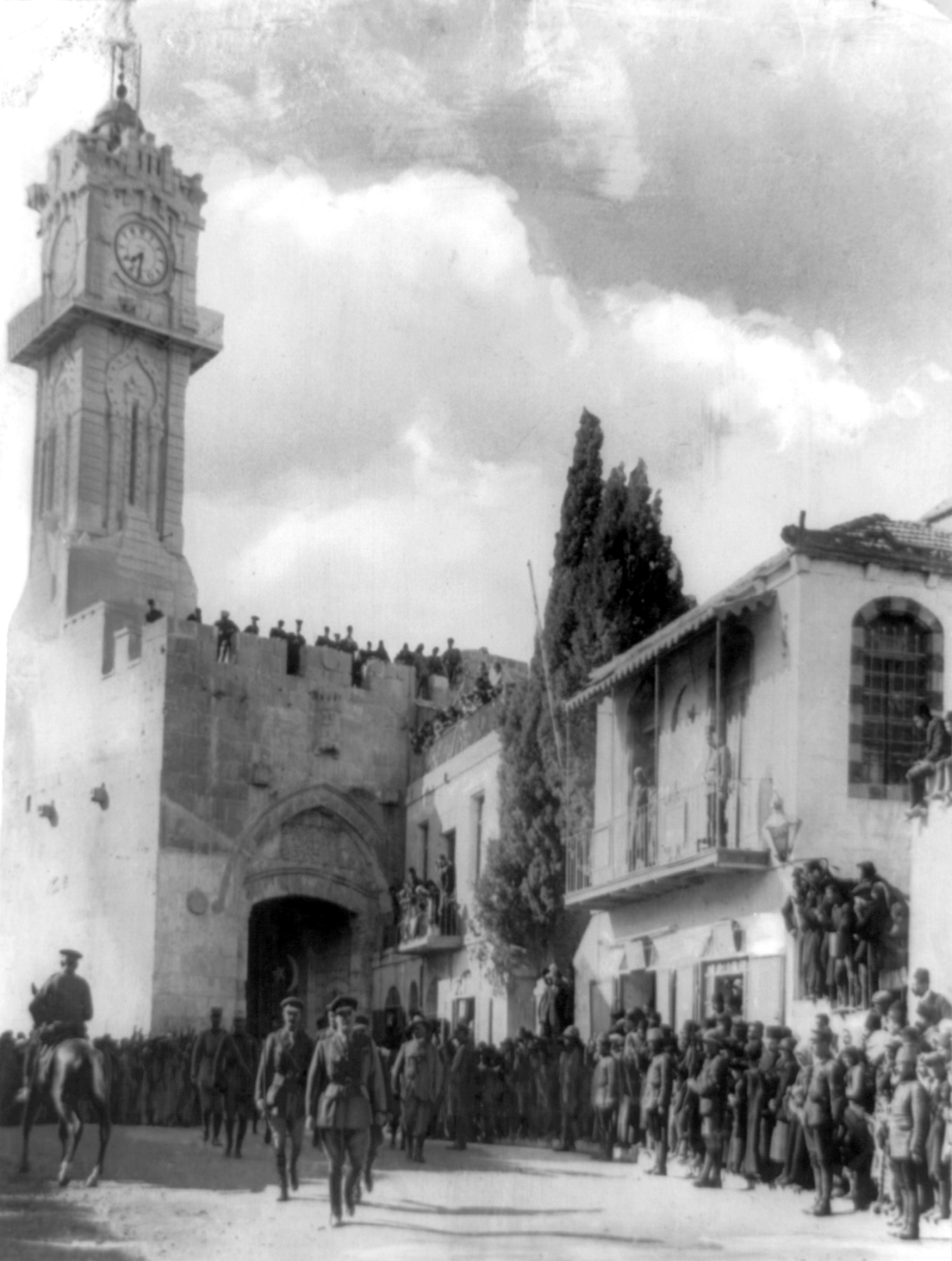
Battle of Jerusalem
The Battle of Jerusalem occurred during the British Empire's "Jerusalem Operations" against the Ottoman Empire, in World War I, when fighting for the city developed from 17 November, continuing after the surrender until 30 December 1917, to secure the final objective of the Southern Palestine Offensive during the Sinai and Palestine Campaign of World War I. Before Jerusalem could be secured, two battles were recognised by the British as being fought in the Judean Hills to the north and east of the Hebron–Junction Station line. These were the Battle of Nebi Samwill from 17 to 24 November and the Defence of Jerusalem from 26 to 30 December 1917. They also recognised within these Jerusalem Operations, the successful second attempt on 21 and 22 December 1917 to advance across the Nahr el Auja, as the Battle of Jaffa, although Jaffa had been occupied as a consequence of the Battle of Mughar Ridge on 16 November.[4]
This article is about the 1917 battle. For other sieges and battles of Jerusalem, see Siege of Jerusalem. For the battle between 1947 and 1948, see Battle for Jerusalem.
This series of battles was successfully fought by the British Empire's XX Corps, XXI Corps, and the Desert Mounted Corps against strong opposition from the Yildirim Army Group's Seventh Army in the Judean Hills and the Eighth Army north of Jaffa on the Mediterranean coast. The loss of Jaffa and Jerusalem, together with the loss of 50 mi (80 km) of territory during the Egyptian Expeditionary Force (EEF) advance from Gaza, after the capture of Beersheba, Gaza, Hareira and Sheria, Tel el Khuweilfe and the Battle of Mughar Ridge, constituted a grave setback for the Ottoman Army and the Ottoman Empire.[5]
As a result of these victories, British Empire forces captured Jerusalem and established a new strategically strong fortified line. This line ran from well to the north of Jaffa on the maritime plain, across the Judean Hills to Bireh north of Jerusalem, and continued eastwards of the Mount of Olives. With the capture of the road from Beersheba to Jerusalem via Hebron and Bethlehem, together with substantial Ottoman territory south of Jerusalem, the city was secured. On 11 December, General Edmund Allenby entered the Old City on foot through the Jaffa Gate instead of horse or vehicles to show respect for the holy city. He was the first Christian in many centuries to control Jerusalem, a city held holy by three great religions. The Prime Minister of the United Kingdom, David Lloyd George, described the capture as "a Christmas present for the British people". The battle was a great morale boost for the British Empire.[6]
Prelude[edit]
British Empire supply lines[edit]
The planned advance into the Judean Hills would rely heavily on the ability of the lines of communications to keep the front line troops supplied with food, water and ammunition. These were already operating at considerable distances from the railhead and base areas, and as a result the advance was forced to pause on 17 November to enable supplies to be brought forward by columns under corps control, which had been sent back to railhead for rations and supplies.[17][18]
Battle[edit]
Advance into the Judean Hills begins[edit]
Despite continued pressure by the EEF, the two opposing forces were now operating in terrain which favoured defence. In addition to rearguards left by the Ottoman Seventh Army's XX Corps as it retired into the hills, the Seventh Army had managed to establish a line of mainly single trenches running south and south-west on a series of heights up to 4 mi (6.4 km) from Jerusalem, supported by well-sited redoubts.[17] Aerial reconnaissance on 17 November found the road north from Jerusalem to Nablus crowded with refugees.[30]